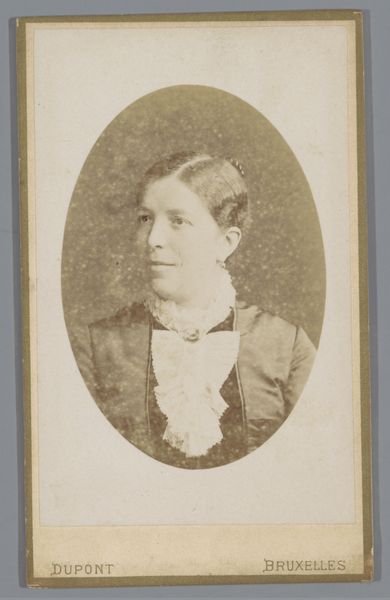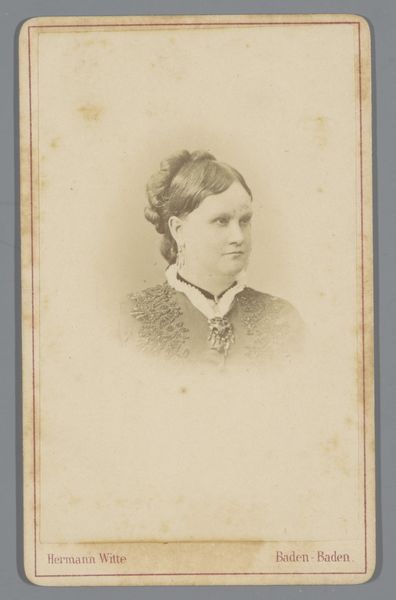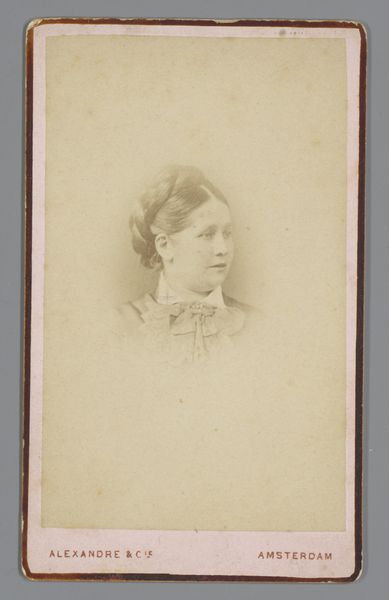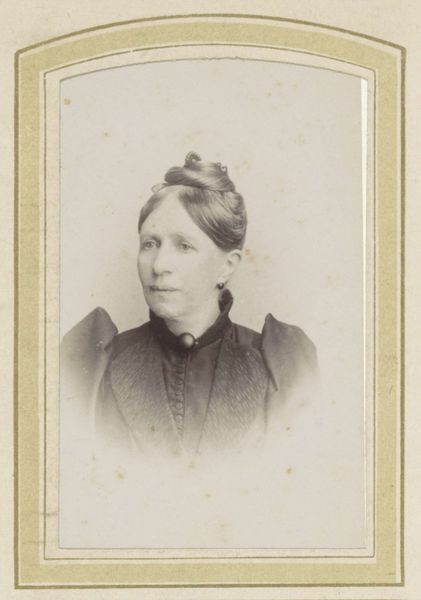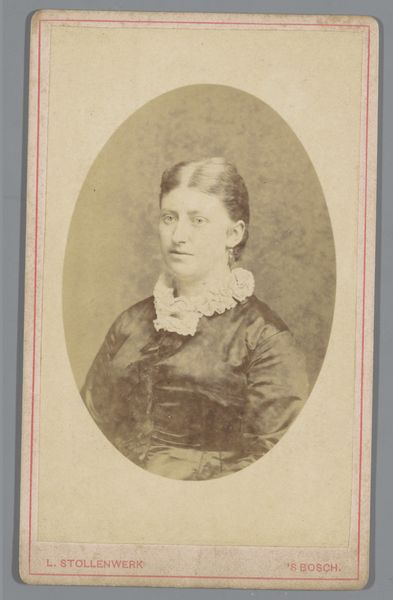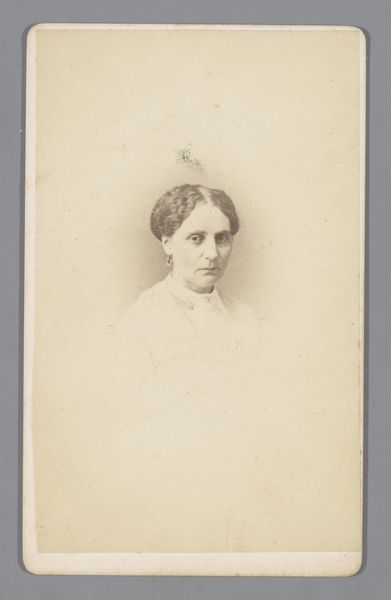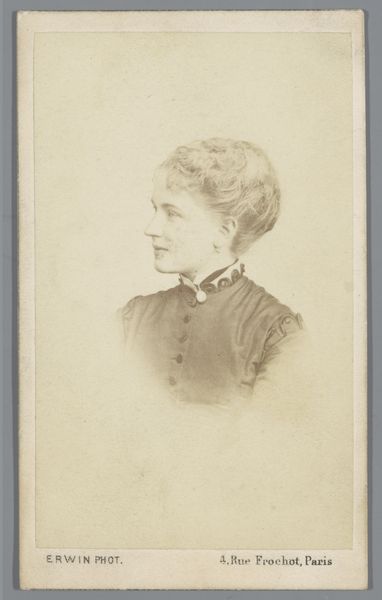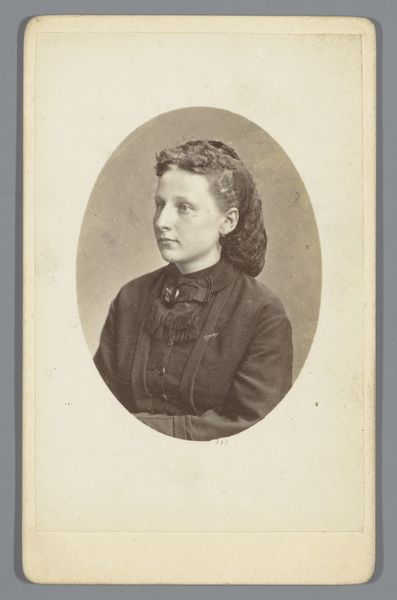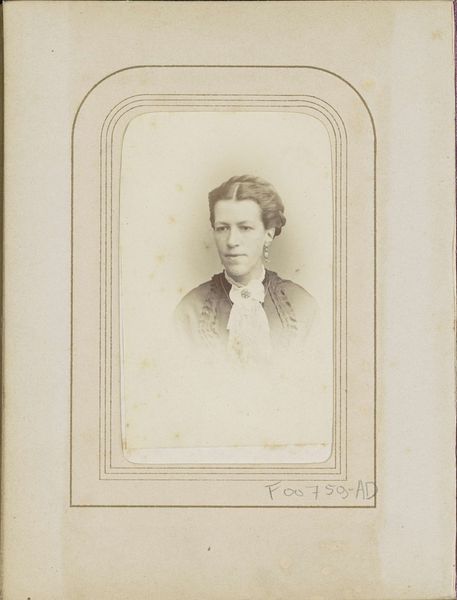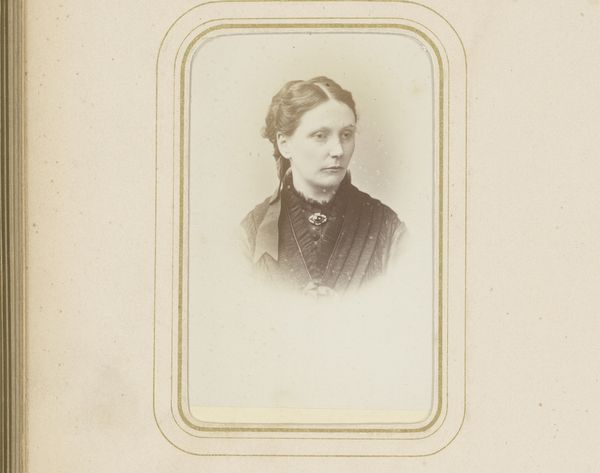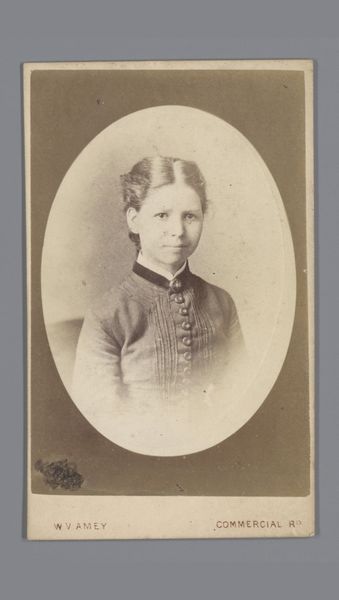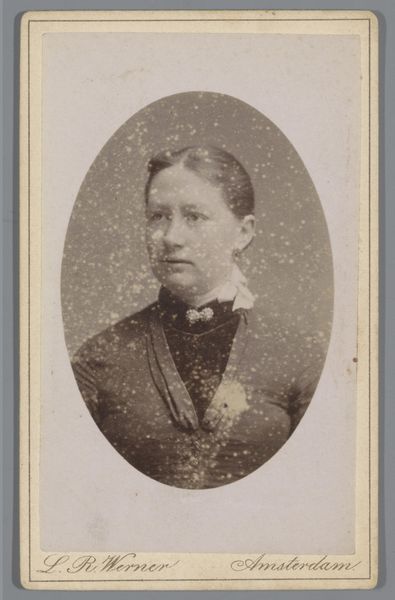
photography, albumen-print
#
portrait
#
aged paper
#
photography
#
historical fashion
#
albumen-print
#
realism
Dimensions: height 105 mm, width 63 mm
Copyright: Rijks Museum: Open Domain
Curator: What strikes me immediately is the wear and tear, almost a melancholic beauty, clinging to this 1866-1875 albumen print, a portrait by Edmond Bacot entitled 'Portret van een onbekende vrouw,' or, 'Portrait of an Unknown Woman.' It's tinged sepia, a colour like memory. Editor: Well, considering it's albumen, that's to be expected. Think about it, egg whites, laboriously applied, light-sensitive chemicals, the whole photographic industry just hitting its stride! This wasn't some quick snapshot; making a portrait like this was a statement. It speaks to how the bourgeois used photography, making themselves enduring, collectable. Curator: Yes, you are correct! And yet, look at her face. It's so intimate. She doesn't appear to be of that bourgeois class you speak of. She is simply there, holding herself within a moment. Editor: Perhaps, but it’s deliberate staging. Every detail tells a story, intentional even. The simple dark dress, the way her hair is styled; it all says something about how she wished to be perceived. More than anything else, what are the origins of this print, what labor was exploited? Was it cheap, amateur, did it travel, etc. I am mostly moved to think of all these physical possibilities and potential Curator: But who decides those messages? You forget her intention within the frame. She meets your gaze steadily, almost daringly. There is resilience etched there. The studio would have posed her, I am sure, but within that, did she choose not to perform what they asked? I sense there is a tension in being asked and refusing and everything coming in between. Editor: Interesting interpretation. All that is probably the truth but those choices happened in the shadow of a larger material context of economy. Look closely—it's a mass-produced object, isn't it? The ornate bordering on the paper points to standardized methods. Photography's impact came precisely because of its increasing availability; the question is, can we uncover more about that process from this image? Curator: Perhaps the process overshadows a truth! Ultimately, looking into that gaze I wonder less who she appears to be, and more: who was she and does this bring her to me as truth? Editor: Indeed, this print leads us to many truths about labour, portraiture, albumen! Fascinating.
Comments
No comments
Be the first to comment and join the conversation on the ultimate creative platform.
